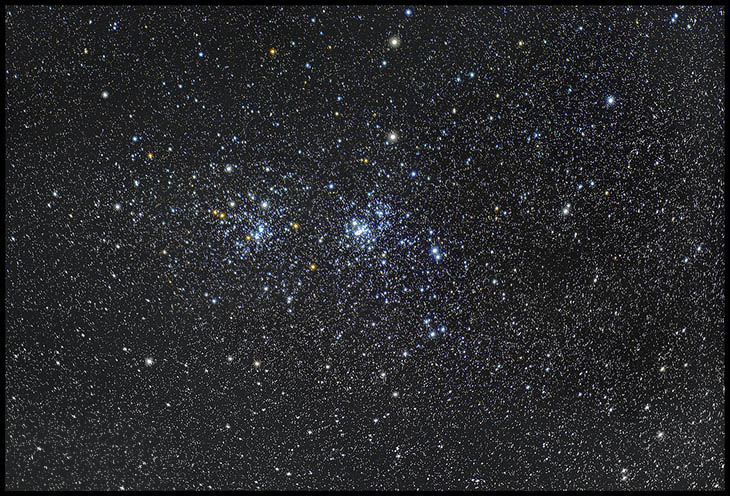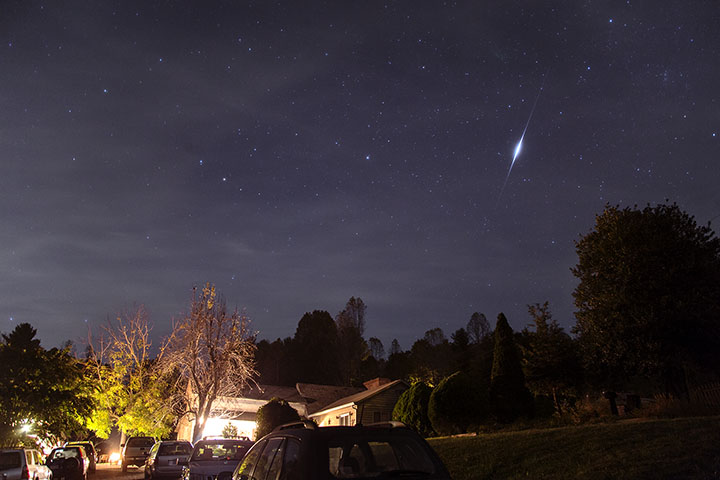Last night, I made a mess
10/24/2016. This stuff is easy! I thought, and of course immediately screwed up. I thought, shoot the Veil with the 6D for a few hours and add the color to the hydrogen alpha work from earlier this month. Then do a really widefield shot of the Double Cluster with the rest of the night. Well, the last third of the rest of the night involved some dew, evidently, but I used the data anyway to smooth out electronic noise, and the RGB data for the Veil is not helping much (yet), and there's still the matter of finding a way of improving the flats to try to even out the severe darkening in the corners of the 35mm frame that results from using an undersized flattening lens.
Details, details. Here's a picture.

Double Cluster
80x180s (4h 00m)
Canon 6D @ ISO 1600
TMB92SS @ F4.4
Fill your screen with stars. Click the pic!
That's much less than half of the frame, and it's not the center cut, either. I framed the Double Cluster in such a way as to include Stock 2 high "above" this selection. It works OK in web-sized renditions, but neither the full frame nor this selection would stand up to close scrutiny while in a critical frame of mind. Fun, though.
10/26/2016. The Double Cluster also appears in the upper right of this photo of a -4 Iridium flare over Monty Minton's birthday party.

Canon 6D @ ISO 800
24-105mm F4L, 24mm @ F4.5
45 seconds
Click for a clearer view.
10/28/2016. Astrophotography is my balm, my trout stream, my golf course, my happy place. Today I ordered an adapter to put my best focuser (that would be the Feathertouch 3025B from the TMB92SS) behind my best deep-sky glass (the AT 10-inch Ritchey). Not only will it let me get the best possible focus for the CCD, the 6D, and 50D but the A-P endcap I bought for the Feathertouch in August will let me use the A-P 0.75x compressor behind the 10-inch RC. All with zero drama and no slippage. So I get sharper, wider, deeper images using just about every sensor in my kit. Thank you, Wayne Schoeder of Starlight Instruments for the expert reassurance that this scheme will indeed work --mechanically at least. With winter skies on the way, this has got to be a good move.